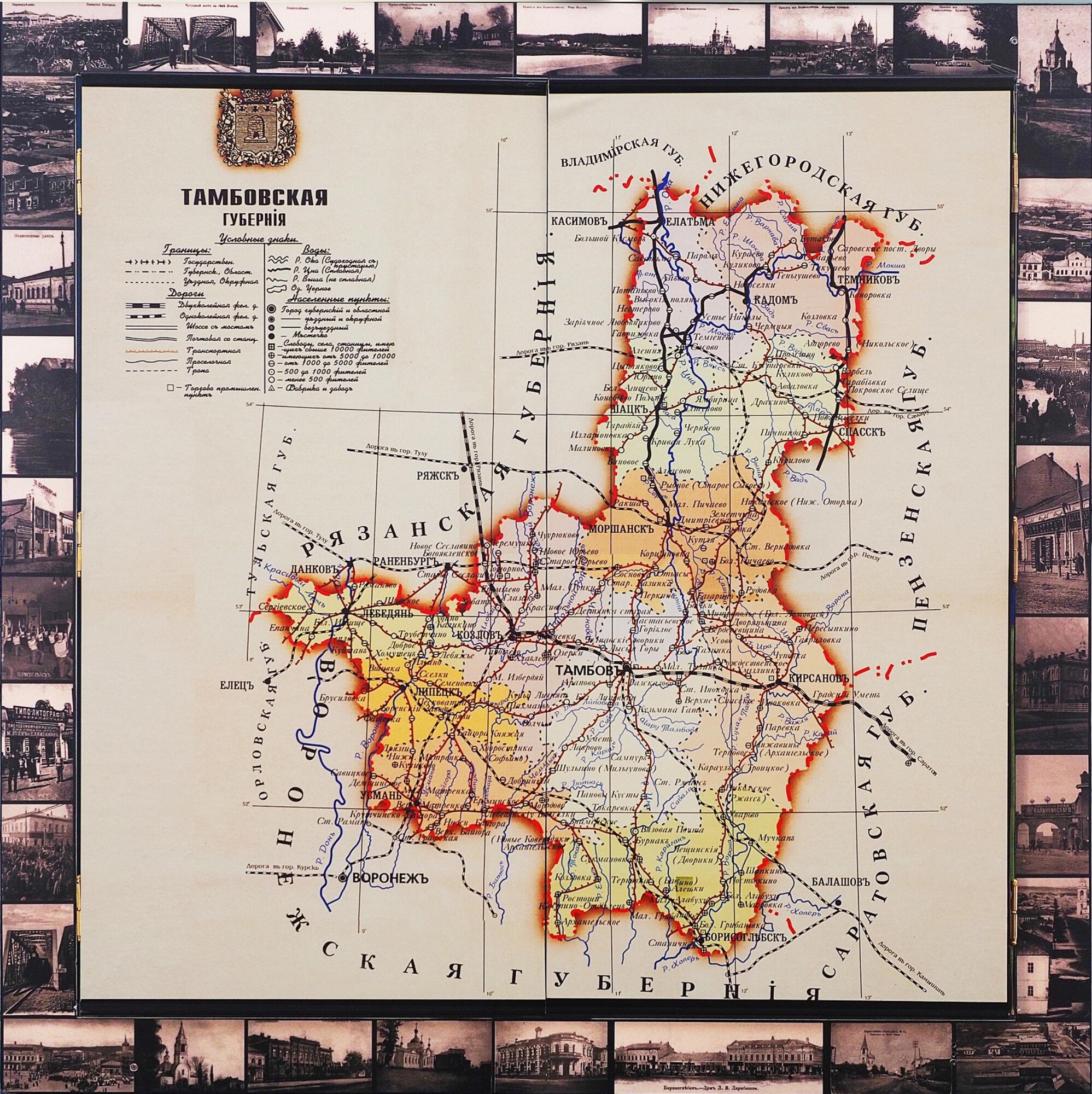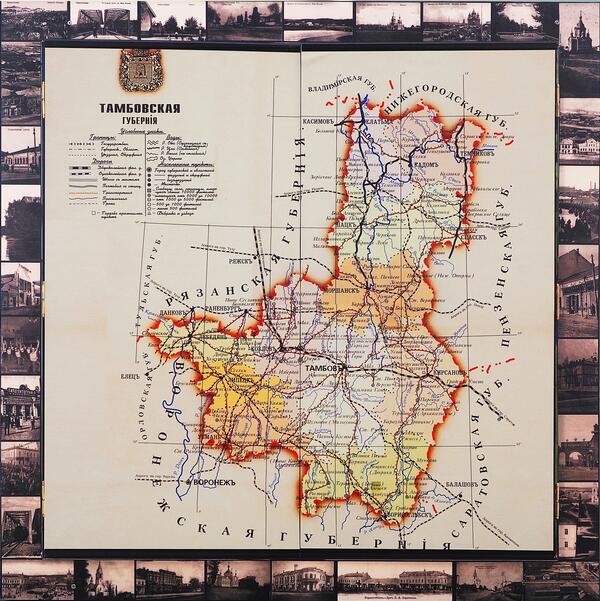Tambov Governorate is shown in the middle of the map. It shares borders with Voronezh Governorate in the south, Ryazansky Governorate in the west, Nizhegorodsky Governorate in the north, Saratovsky and Penzensky Governorates in the east.
In the beginning of the century Tambov Governorate was one of the biggest in its territory, and it was two times bigger than today’s Tambov Oblast.
According to its economic indicators, Tambov Governorate ranked in the top five governorates. The agricultural industry, tobacco production, and industrial production were actively developing. The manufactured goods didn’t only satisfy demands of the population, but was used for export. The main treasure of Tambov Governorate was its fertile land, which produced prolific crops, especially the cereal ones (rye, wheat, oat, millet). For this reason, agriculture with predominance of farming was the main activity in the region. Out of all farms more than 60% consisted of fields. Agriculture was managed based on the three-field system. Moscow was the main customer of agricultural production. There were also solid foreign sales via the Baltic ports.
Manufacturing industry was well developed in Tambov Governorate, large-scale enterprises functioned in many cities. Ironworks, metalworking factories, still houses, mill houses, and cloth factories functioned there.
In the late 19th century Gryaz-Tsarityno railway, which gave rise to the merchandise turnover, was opened. In 1898 more than one hundred million poods of shipments not including the transit ones, were sent via this railway.
The total population was around three million people. Almost 2,5 of them lived in the countryside, there were more than 3000 of villages. There was overwhelming majority of peasants compared to the merchants and members of nobility.
The universities, country schools and colleges functioned around the whole Governorate. Big libraries were opened for students. Culture life was developing, people used to go to the theatres, organize exhibitions and charity events. The publishing houses printing local newspapers and magazines functioned in different places.



